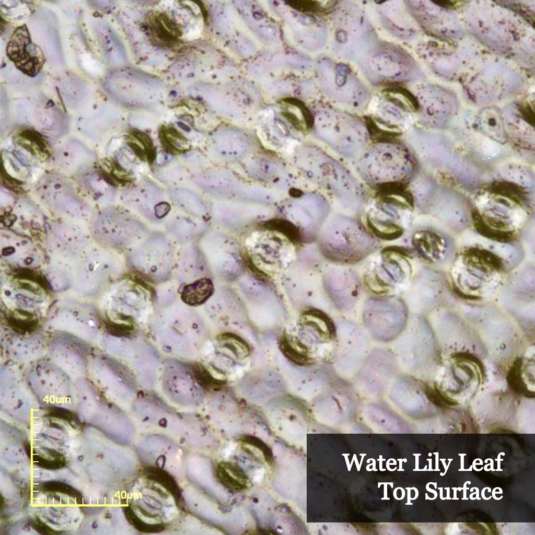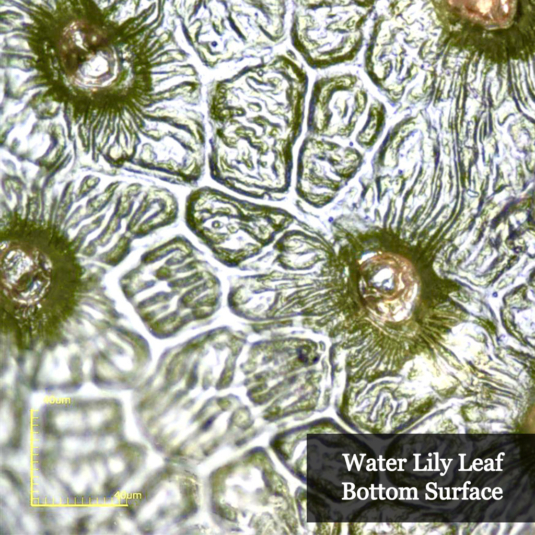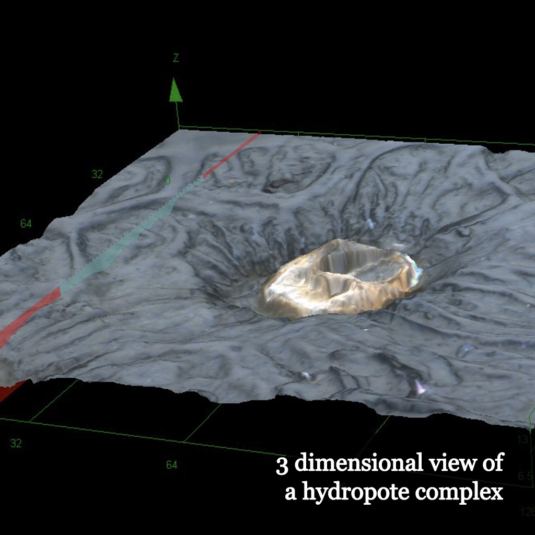Yellow water lilies (Nuphar polysepala)
Yellow water lilies (Nuphar polysepala) inhabit many lakes and ponds throughout the Rocky Mountain region including the Snowy Range Mountains near Laramie Wyoming. Like aspen trees, these plants grow up from a massive network of rhizomes (specialized underground stems) meaning that many lily shoots are part of one large organism. Often when they are present in a lake, water lilies take up a large portion of a lake (sometimes the leaves cover almost the entire lake surface!) and as such, they influence the physical, chemical, and microbiological environment of the lake. For example, lakes with water lilies tend to be more acidic, and water lilies block light, uptake nutrients (that microbes also use), and provide a food source and structure for microbial growth. All of these factors likely influence the microbes that grow in these lakes, leading to a different microbial composition as compared to lakes without waterlilies. The plants themselves play host to diverse microbial communities where even different sides of the same leaf are home to different microbes (see the picture descriptions).
“Water Lily”
A yellow water lily (Nuphar polysepala) floating on the surface of an unnamed Wyoming lake termed “Beaver Lake” by the researchers.
“Water lily leaf top surface”
The top surface of a water lily leaf. The cells that appear darker and look like they are split in half are stomata that are involved in gas exchange. In other words, these cells form a pore that allows carbon dioxide to enter the plant and oxygen to leave. The purple color comes from pigments that are found in the first water lily leaves that emerge in the spring. These pigments likely protect these new leaves from damage from sunlight. The top of the leaf has a waxy coating that keeps water droplets off and allows the stomata to “breath” freely while floating on the lake’s surface.. This also seems to prevent microbial growth as far fewer microbes (and their DNA) have been isolated from this surface, even when the leaf is still under water.
“Water Lily Leaf Bottom Surface”
The underside of a water lily leaf. There are no stomata on this side of the leaf and instead the large pink-ish blobs are specialized cells called hydropotes found in many aquatic plants. These cells help transport water, minerals, and other nutrients in and out of the plant. Unlike the top the leaf, a thick, slimy layer of microbial growth called a biofilm forms on the undersides of the leaves. This microbial biofilm is more diverse than the microbes found in the surrounding water or on top of the leaf.
“3 dimensional view of a hydropote complex”
A rough 3-dimensional view of a hydropote complex on the bottom of a leaf. Several other cells surround the hydropote and form an indentation in the leaf surface resembling a crater or volcano!
“Cross section of a water lily leaf”
A cross section of a water lily leaf oriented so the top, which is kind of purple, is facing up.
Image source: Ella DeWolf





